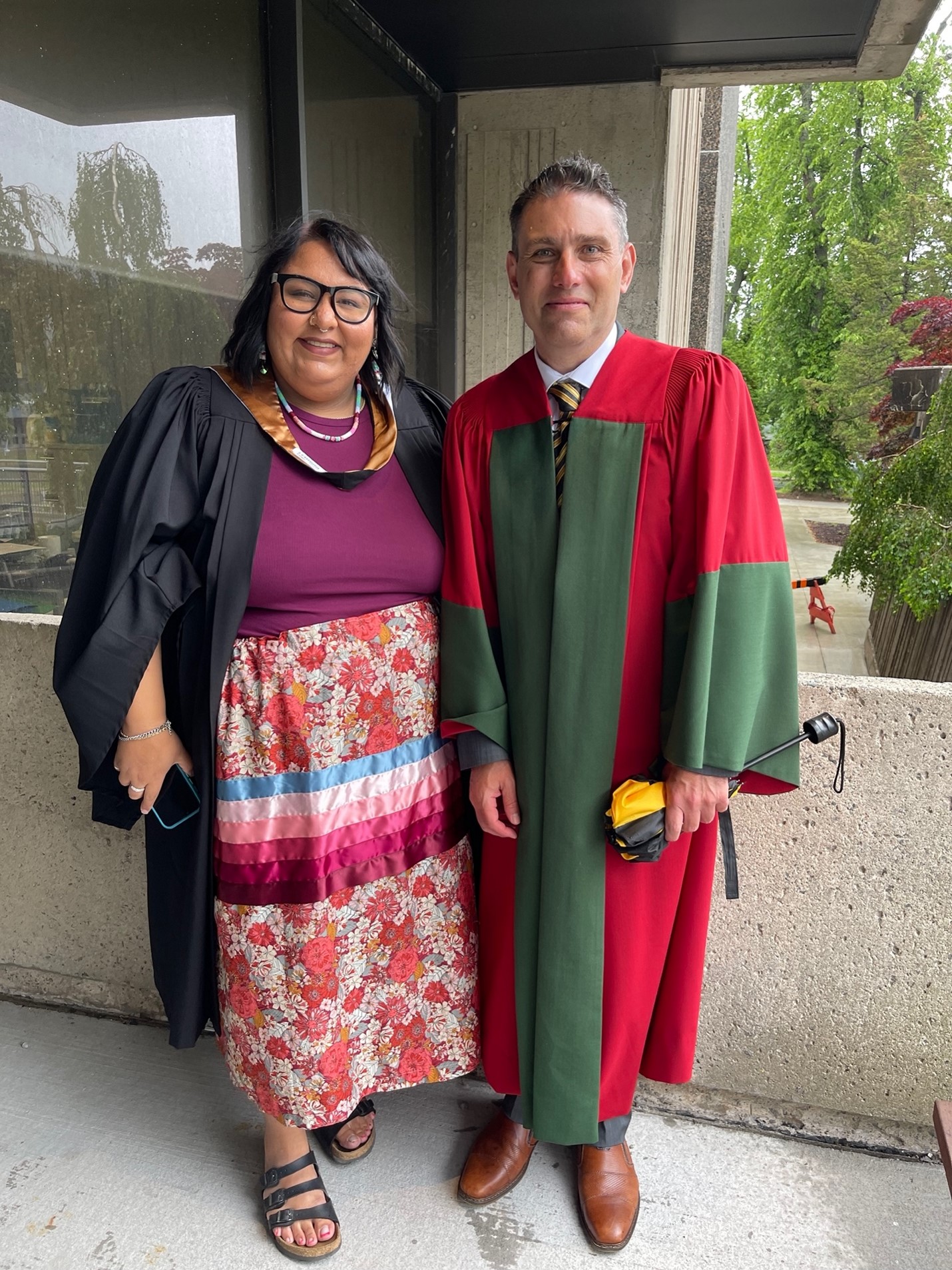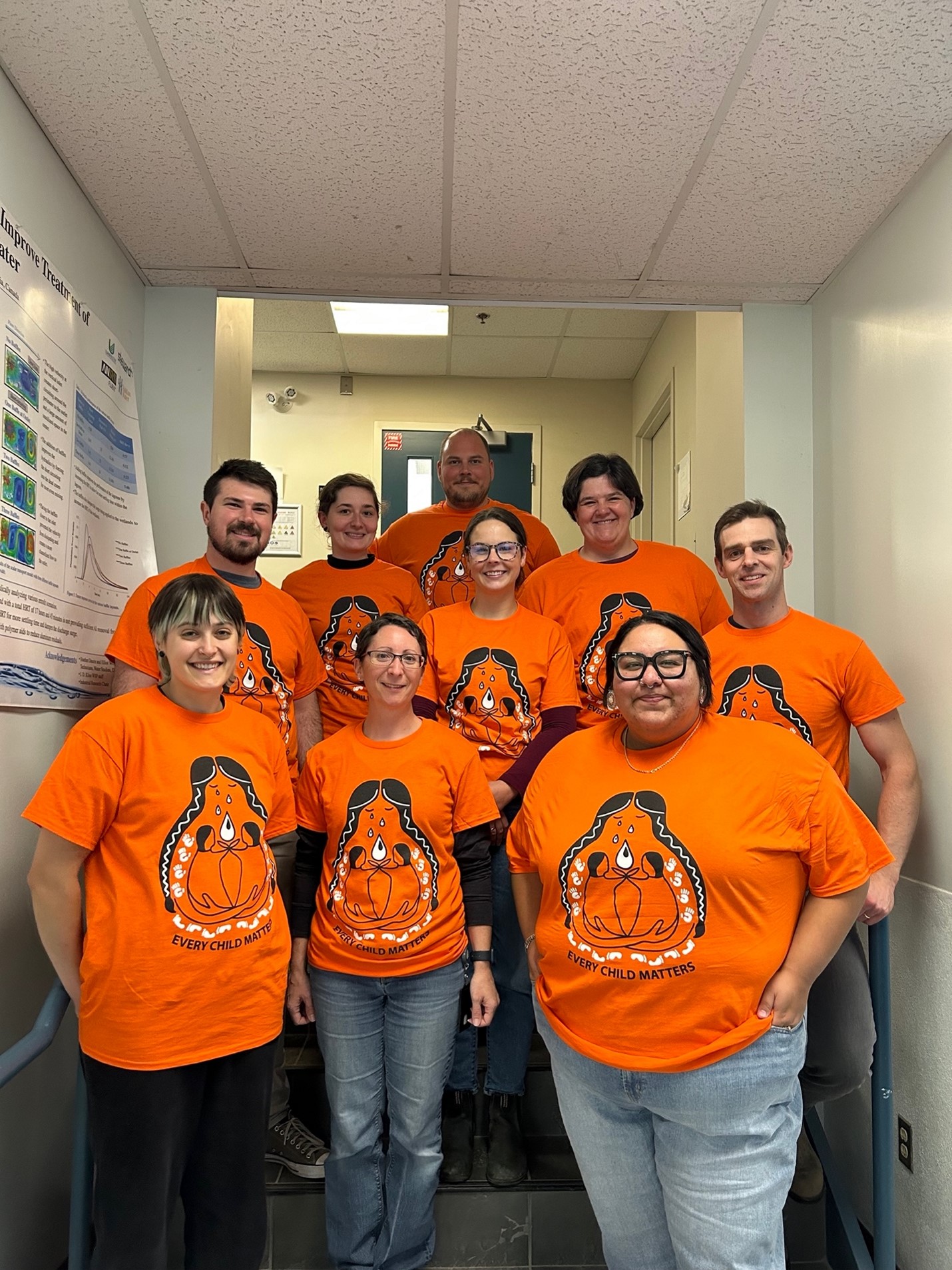
10 minute read
Spotlight on Innovation Presents...
Tiannie Paul, EIT
When Tiannie Paul, engineer-in-training (EIT), thinks about innovation, she thinks about people—she thinks about community-building.
Paul, the first Mi’kmaw woman to graduate from Cape Breton University’s Engineering Diploma program, is guided by her intuition and uses her emotion as strength. Throughout her short yet fruitful engineering career, she remains acutely aware of her intent, and impact on those around her.

Upon completing a Bachelor of Environmental Engineering at Dalhousie University in 2021, Paul went on to work as an Operations Engineer for the Atlantic First Nations Water Authority (AFNWA) for two years. She is currently on education leave to pursue a master’s in applied science in Civil Engineering, also at Dalhousie.
My Wabanaki world views led me to pursue a career in western engineering so I could have the confidence and knowledge to help my community of Eskasoni First Nation, and other First Nation communities, to be good stewards of the water.

At the Spotlight on Local Innovation, Paul will be presenting on the Community Lead Sampling Program she led with AFNWA. With the help of two colleagues, community water operators and support staff from Dalhousie University’s Centre for Water Resource Studies, Paul conducted the collection and sampling of several First Nations community’s water systems to measure lead and copper concentrates.
“It was my first time running such a large project, and as an EIT, it was challenging but I loved every moment,” says Paul. “I got to engage with elders, youth and household members and feel their gratitude. I know I’m doing what I’m meant to be doing.”
Once the project got approval from the Chief of each community, Paul and her team did individual engagement— introducing themselves, explaining the aim of the sampling and getting the community boards’ feedback on whether they wanted the project to be applied within their public buildings or households.
This monitoring—recommended by Health Canada—routinely happens in municipalities, but very rarely, if ever, in First Nations communities. As someone who grew up with boil water advisories and water pressure issues, Paul empathizes with those facing the burden of not having safe drinking water.
“One of the struggles I face as an Indigenous engineer is that people forget I’m human and I’m going to express my feelings before I put on my engineer hat,” she says, “If I hear something awful that’s happening within a community, I’m going to cry and react before I may have solutions—who wouldn’t?”
In all her engineering work, Paul applies the Etuaptmumk, “two-eyed seeing” principle— taking both western and indigenous knowledges into account to create a mutually accepted and beneficial path forward. Paul recognizes the code of ethics and regulations she must abide by as an engineer in Nova Scotia but in an equal effort stands by the Indigenous knowledges she grew up with.
According to Paul, if engineers are to do their due diligence and keep people safe, they must also consider diverse needs, colonization and environmental stewardship.
“Innovation to me is gaining new knowledge and techniques to share with our peers. Humans do not exist in a vacuum; we need the living and non-living parts of our world to be healthy, so we can be healthy and forge a collective way to conduct projects that account for different perspectives.”
At the Spotlight event, Paul hopes that through sharing her project details and lived experiences, the audience will leave with an increased mindfulness, particularly on how essential engagement and transparency are when engineers work with First Nations communities.
Wherever her career may take her, Paul is certain about one thing—that her time is valuable, and she’ll spend it building meaningful relationships.
“MI’klukwe Mkite’tmsi aqq Kksalsi.”
“Work hard, believe in yourself, and love yourself.”
Debra McLellan, P.Eng., & Elizabeth Dionne, P.Eng.
Upon approval by the Utility and Review Board, Nova Scotia Power’s Battery Pilot Project will be the largest battery storage project constructed in Atlantic Canada to date.
Debra McLellan, P.Eng., Project Manager and Senior Technical Advisor of Energy Storage, and Elizabeth Dionne, P.Eng., Senior Electrical Engineer, have blended both a technical knowledge of the province’s utility grid with their green solutions and consulting experience, to help Nova Scotia Power’s Battery Pilot Project come to life.
The pair will be tackling the project development thus far and the strategic plan going forward in their Spotlight on Innovation presentation this March. The presentation will also cover the lesser-known capabilities of batteries— the components that most people don’t consider. Think: frequency and voltage regulation for the entire grid, not just a storage solution.
The Pilot Project proposes the battery storage sites be distributed to three different areas across the province, maximizing the benefit and potential of the energy grid from as far as Cape Breton, all the way to the other side of the province, with effects running off into New Brunswick.
“There is a lot of battery research going on in Nova Scotia right now, and having this project is building excitement and building the energy storage expertise for the future,” says McLellan. “There are more and more folks getting into this space and development work is going on—not only in stationary energy storage, but in electric transportation.”
Another lesser-known impact of battery usage is the vast response capability, which would allow the province to manage through large-scale power outages—a main concern for Nova Scotians as extreme weather conditions become increasingly common.

Coming from a background of coordinating transmission outages in Nova Scotia Power’s energy control centre, Dionne sees a pressing need for the
project’s implementation. If everything goes to plan, the battery team is hoping to open its first service location by the end of 2025, and its last in 2026.

“In one way or another, we’ve come to rely on power, so it’s about finding ways to make it cleaner, more efficient, more reliable and more resilient,” says Dionne. “Using existing technology and new technology, we can move away from traditional methods of energy...I’m excited to take that on.”
With respect to the innovative capacities of the project, its novelty and newness within the province is clear— Nova Scotia has never seen battery storage to this extent.
“What is unique about Nova Scotia is that we have a large proportion of wind energy,” says McLellan. “As we get into using the capabilities of our
batteries—even though it is a commercially available and proven technology—there’s going to be nuances and fine-tuning and optimizing for the site-specific application in Nova Scotia.”
Set by the federal and provincial government, Nova Scotia Power is on a path to phase out coal and reach 80 per cent renewable energy by 2030. The Battery Pilot Project is a key component of fulfilling this target.
Evidently, McLellan and Dionne are jumping the unique hurdles that clean energy poses, paving the way for battery storage solutions in the province.
Dawne Skinner, P.Eng.

Dawne Skinner, P.Eng., is no stranger to innovation. In fact, the word is quite literally in her title— Chief Innovation Officer and Co-Founder of Acuicy.
Acuicy is a startup software development company focused on decarbonizing supply chains with data-driven and tailored recommendations. The startup aims to make these recommendation tangible, actionable and accessible so that companies that have set net-zero emissions goals can reach their targets.
According to Skinner, a whopping 75 per cent of a company’s emissions are produced solely in their supply chains. To rework these parts of a business, a re-education and incentive program are required.
This is where the “innovation” comes in.
Skinner’s presentation at the Spotlight on Local Innovation event will provide an overview of Acuicy’s mission. She hopes attendees will leave feeling empowered to harness their technological ideas into a potential business, and for those already entrepreneurial, to confidently expand their scope.
“For us in little old Nova Scotia, sometimes people don’t think scaling globally is possible, but it is,” she says. “If you have an idea, there is so much support in Atlantic Canada from incubators, non-dilutive grants and mentors; it’s really a great place to do something innovative.”
Skinner attributes her career trajectory to the Master of Business Administration she completed in 2018 at the University of Bradford School of Management in West Yorkshire, England. The program, “Innovation, Enterprise and the Circular Economy,”, ultimately shaped her holistic view of engineering.
“Many sustainability frameworks have failed because they’ve always been at a cost and businesses aren’t willing to impact their bottom line,” says Skinner. “The circular economy actually shows that you can be profitable while reducing your negative impacts on the various environmental, social and governance (ESG) components.”
Upon studying the circular economy in detail, Skinner has led some of the first federal government studies and worked alongside a variety of large corporate clients who’ve significantly reduced their footprints.
She has also obtained two degrees at Dalhousie University—an undergraduate in Environmental Engineering, and a master’s in Civil Engineering, focusing on water and wastewater treatment. Skinner is currently pursuing her PhD in Industrial Engineering, also at Dalhousie, with a focus on using predictive analytics to optimize circular supply chains.
Skinner finds strength—and, in turn, success—through creativity.
Being Chief Innovation Officer means always pushing to improve systems and overcoming their persistent structural barriers. Although a process might seem set in stone and inevitable, Skinner finds satisfaction in finding new ways of solving problems with her cross-industry perspective.
“Innovation is not just technology. We don’t often think of engineers as creative, but it’s about thinking ‘how can I take something that works in one industry and apply it to another’—which you need a breadth of experience for. It’s also about imagination; we must figure out how to be creative in problem-solving since what got us into a mess will often not get us out of a mess.”
- Dawne Skinner, P.Eng.
For her, creativity is innovation.
After working most of her career in consulting, Skinner has the knowledge to create complex, adaptive systems, while remaining aware of the engineering works’ upstream and downstream implications.
Although the future of a startup is never completely clear, she is committed to growing Acuicy—particularly in
Nova Scotia—by harnessing existing technology and bringing in top talent.
“Being in the startup world has been a huge learning curve,” says Skinner. “I’m used to submitting a 50-page proposal for a $50,000 job, and with startups, you pitch for three minutes, and someone can cut you a $500,000 cheque. If there’s anybody out there sitting on an idea and is nervous about being an entrepreneur, just know that I was too, and it’s the best thing that’s ever happened to me.”




